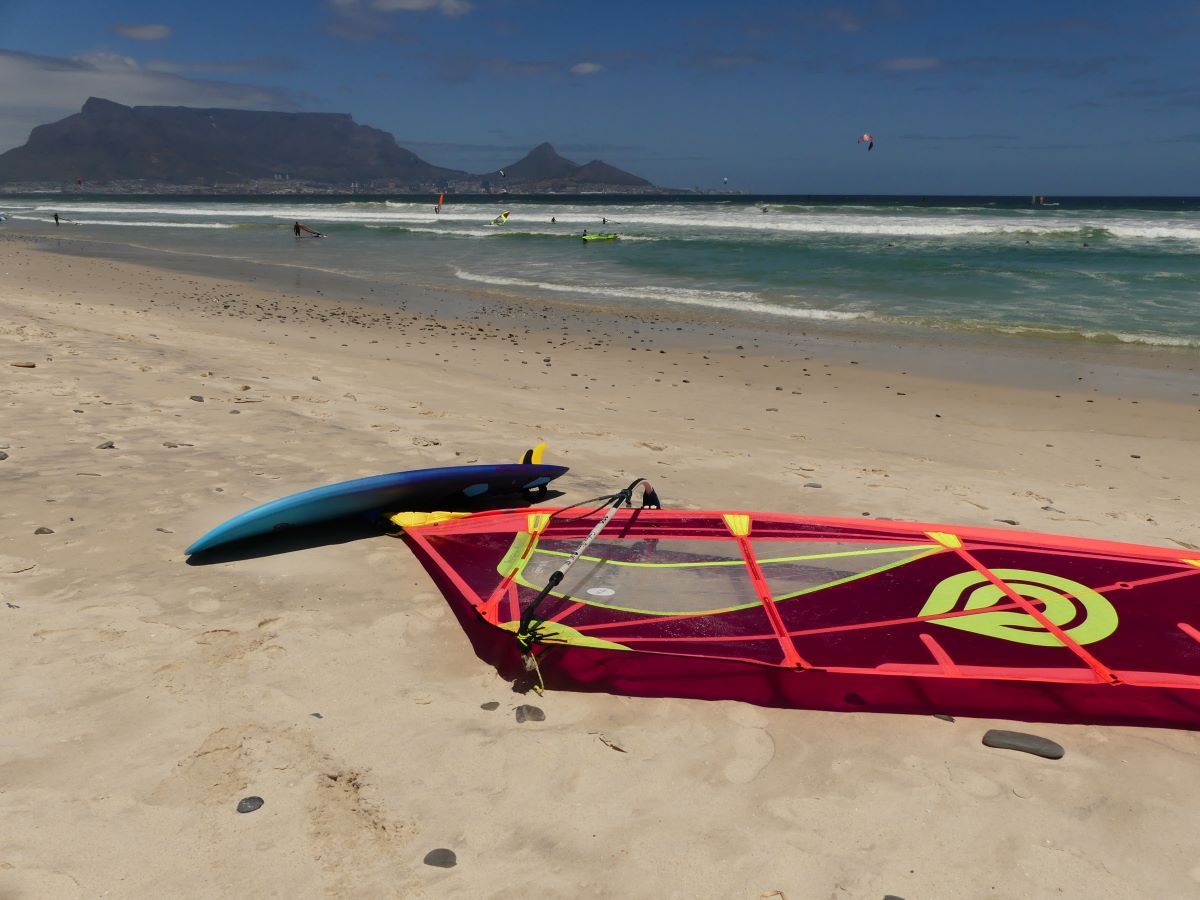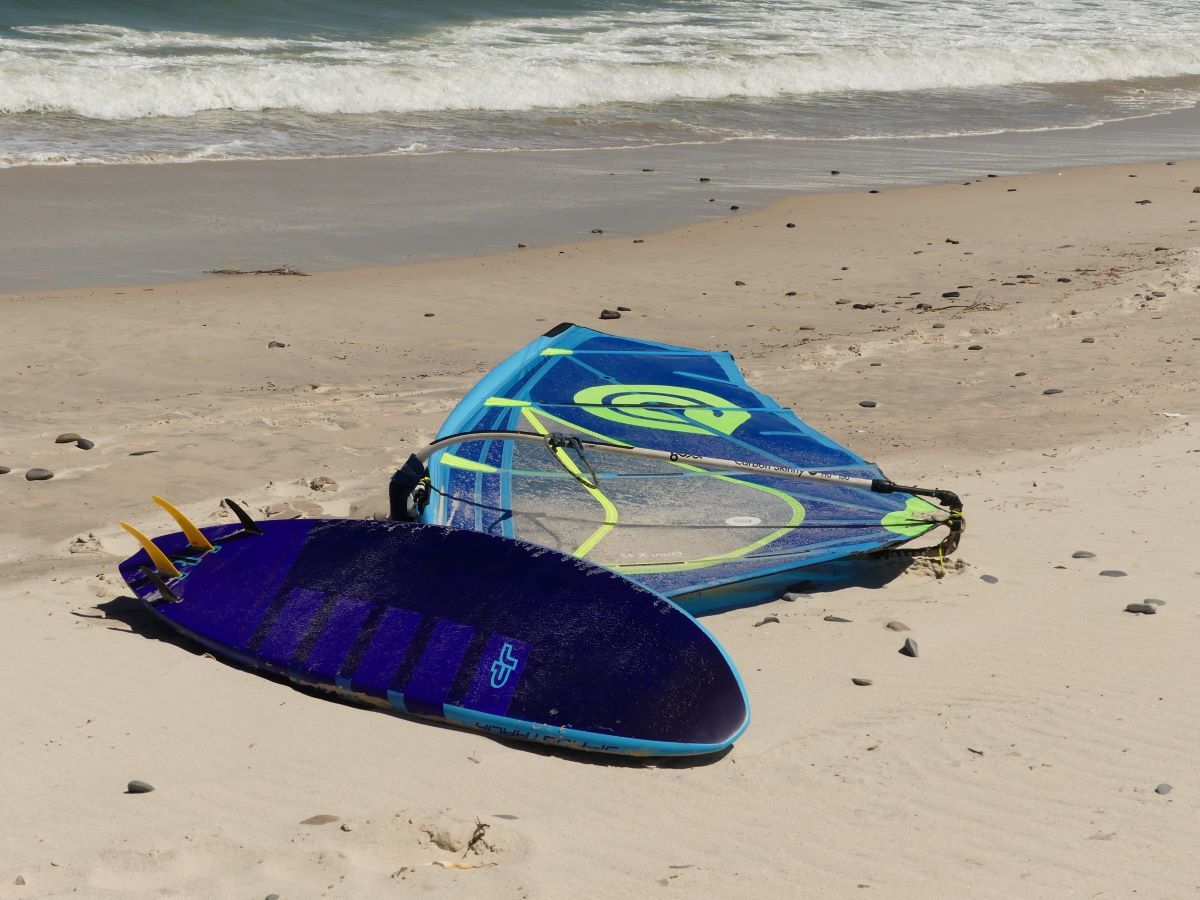This year, I decided to change one of my windsurfing boards for waveriding, and I bought a JP Magic Wave Pro 2022. In this article, I will tell you about the results of my test of the board from the well-known Australian brand.
Windsurfing, test: JP Magic Wave Pro 2022
The idea of changing my wave board and switching to the JP Magic Wave Pro came to me in February in South Africa, after seeing this model on the beach. I was particularly struck by the distribution of volumes, and the shape: greater volume and width in the center and towards the board nose, and a relatively narrow tail. It gave me the idea of a more comfortable shape for waveriding sessions with lighter or more unstable winds, compared to the Tabou Da Curve 2020, which I owned at the time. Let's be clear: the Da Curve is a great board, but it has a narrower and longer shape, and it performs best in ideal conditions, with constant wind, and clean waves. But, it is more common to encounter dirty, less than optimal conditions. Especially in the Mediterranean sea. And then it is better to adapt to where you ride most. Also because a little comfort, in waveriding, does not hurt. For many of us amateur windsurfers, not perfectly trained and super reactive, it is not advisable to choose radical boards, which are perhaps suitable and perfectly exploitable by Campello, Brawzinho and other guys like them, or at least in spots that give quality waves and not foam ....
As for the volume, the choice fell on the 89 liters. For a long time, I (and not only me) have thought that, to catch more waves, even in side off conditions, with unstable wind, it is better to have a bit of volume under your feet, to plane earlier, to ride better upwind, and not get too tired.
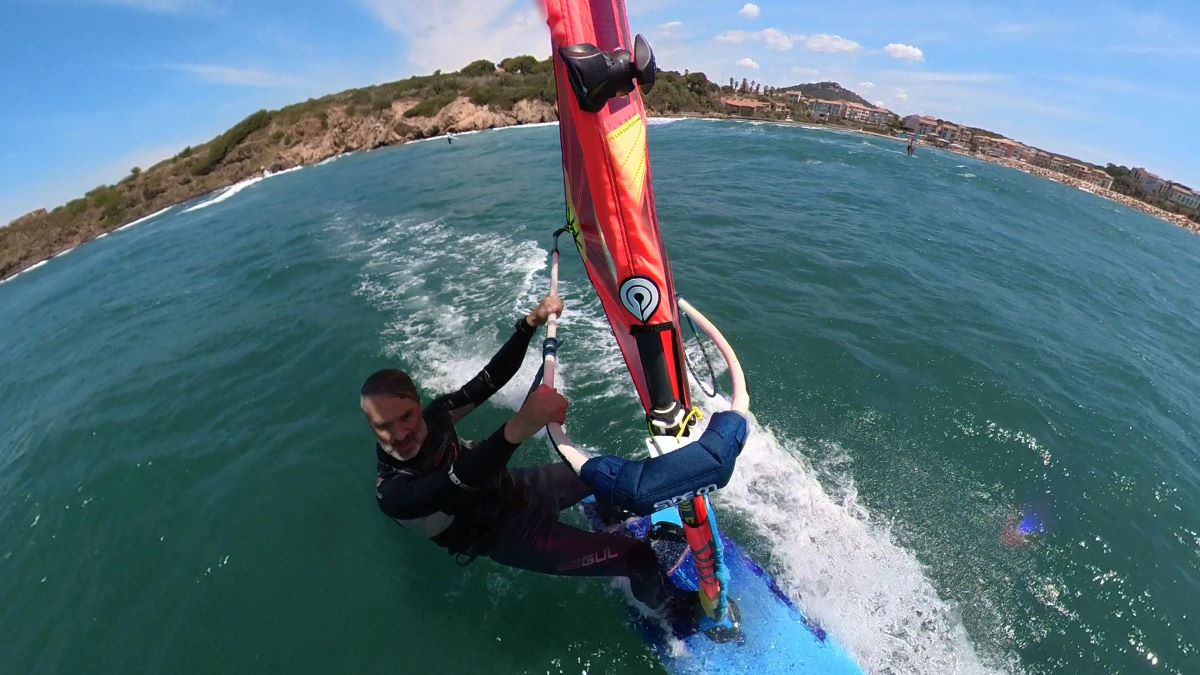
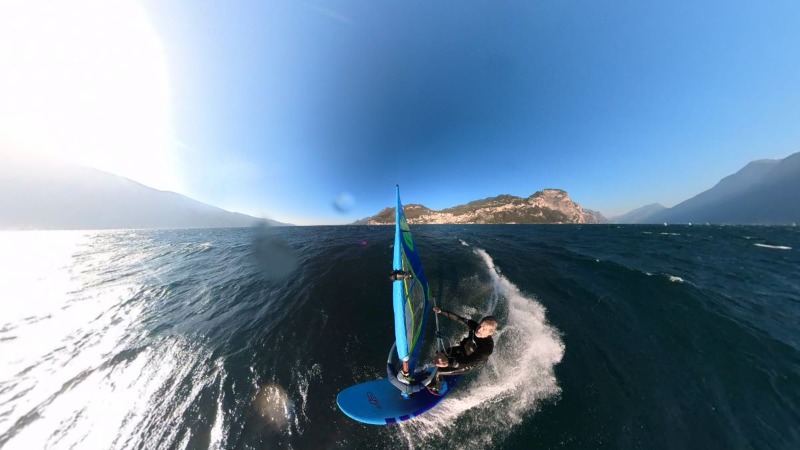
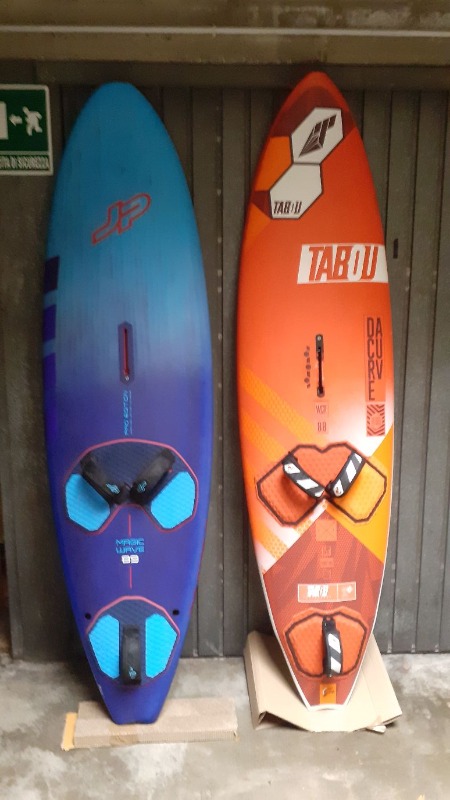
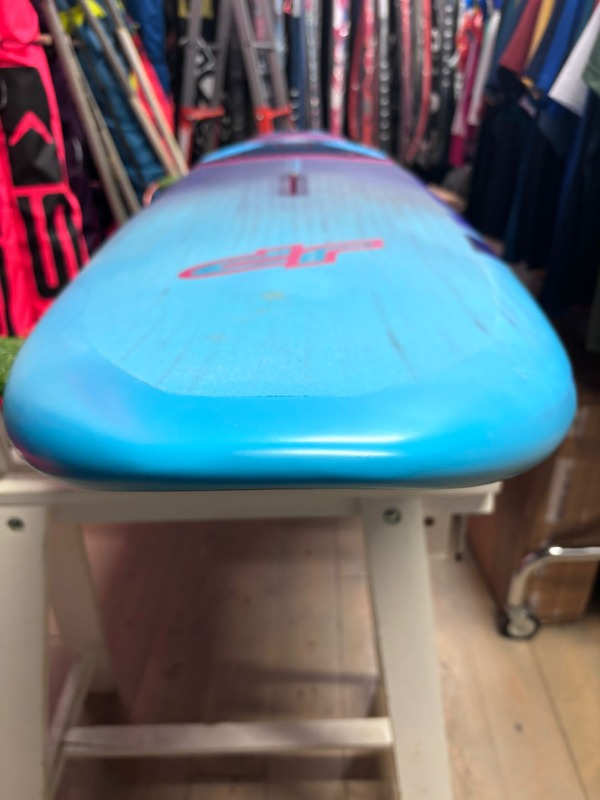
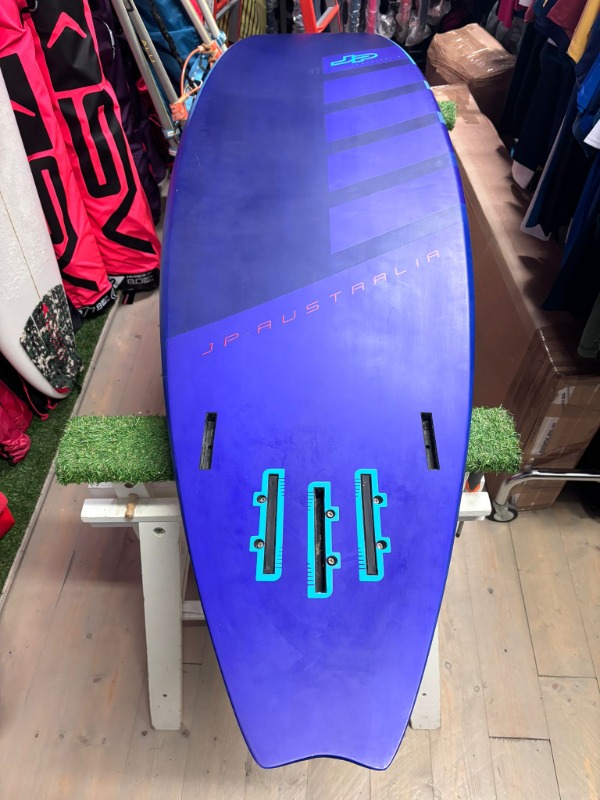
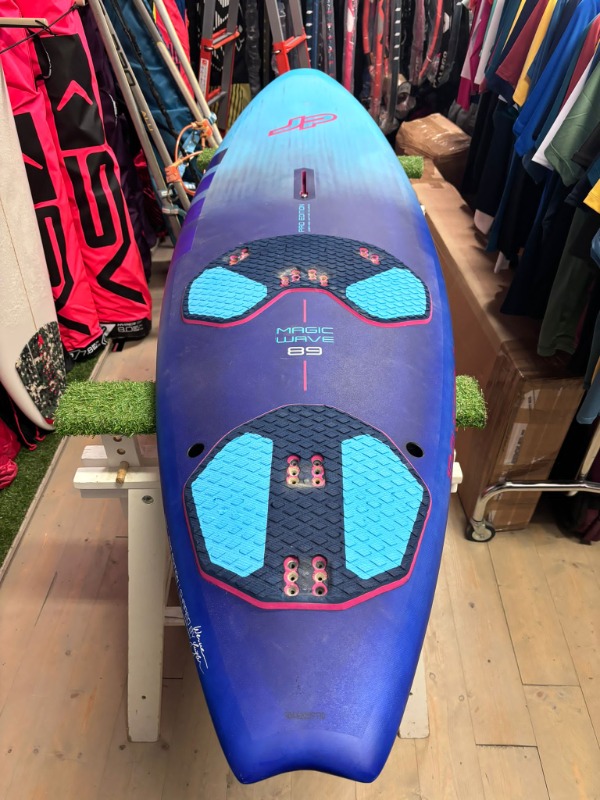
First, let's look at the board's features, and what the brand says.
"This new all-round wave board concept combines and surpasses the best features of our previous models. The Magic Wave takes inspiration from the speed of the Thruster Quad, the versatility of the Wave Slates, and the ease of riding of the Real World Waves. It also offers incredible speed and confidence on the wave, matching the performance of the Ultimate Wave in most conditions, even in waves up to and above the mast.
Extremely quick to get planing and reach top speed, the Magic Wave pops over white water effortlessly and jumps extremely high. It offers both front and back foot wave riding possibilities, gaining speed and control from the advanced rocker shape, beautiful rails and wide, thin, ultra-high performance swallow tail.
Confidence, speed, comfort and grip on the wave all combine into a board that feels carvy and loose on the wave face, while still offering the essential speed needed for more onshore conditions.
Finally an all-round board which excels in mediocre conditions but does not compromise on wave performance.
(...) The more parallel rail outline that we gain from the wider nose and tail really helps with early planing and keeping speed through white water. It also is easier to keep as much speed as possible through the bottom turn in onshore conditions and side-shore alike. You can use a smaller sail and feel less overpowered with this new design which makes wave riding and jumping feel much more comfortable and controllable.
Jumping is easy on this board because the wide nose and tail give more lift when hitting the wave, so you automatically jump a little bit higher. When you come down to land forward and backwards rotating moves, you have more board under your feet and at the nose which makes for a more forgiving landing.
New carbon fins: The boards come with a set of new thruster fins featuring a more traditional outline and more area especially in the tip. Thus, planing and maintaining speed is easier. They are more forgiving in manoeuvres and smoothen the ride.
The thruster fin setup grants the widest possible range of wave use and the 5-fin box setup enables tuning to personal preferences, giving the boards greater range of use from onshore to down-the-line conditions."
The technical data of the 89, are as follows:
Length: (cm) 223, Width: (cm) 60, Volume: (liters) 89, Weight: (kg) 6.7 +/- 6%,
Fins: 1x Wave 20 RTM + 2x Side Wave 10 RTM
Fin boxes: 3 x Slot Box + 2x Mini Tuttle
Recommended sail size: 4.2-6.0
Ideal sail size: 4.4-5.6
Impressions of use, and in the water:
First of all, while I was setting it up, I was struck by the attention to board details, which I have not noticed in other brands. For example, the straps, very comfortable, have a graduated scale with precise and very useful references for adjusting the Velcro. And this also applies to the fin boxes, for their adjustment, and for the mast foot box. The standard fins are excellent, made in carbon, very stiff (even if the RTM is more fragile and difficult to repair). The board is delivered with a thruster setup, but, as mentioned above, it is equipped with 5 boxes, and the box covers are also provided (a feature not always given).
As for the configuration of the board as a quad, I asked JP, who suggested I take two JP Multi wave 14.5, as equivalent (same range of reference sail sizes) to the standard central (of the thruster), for a quad setup. See table below for the choice of central fins (the lateral ones remain fixed).
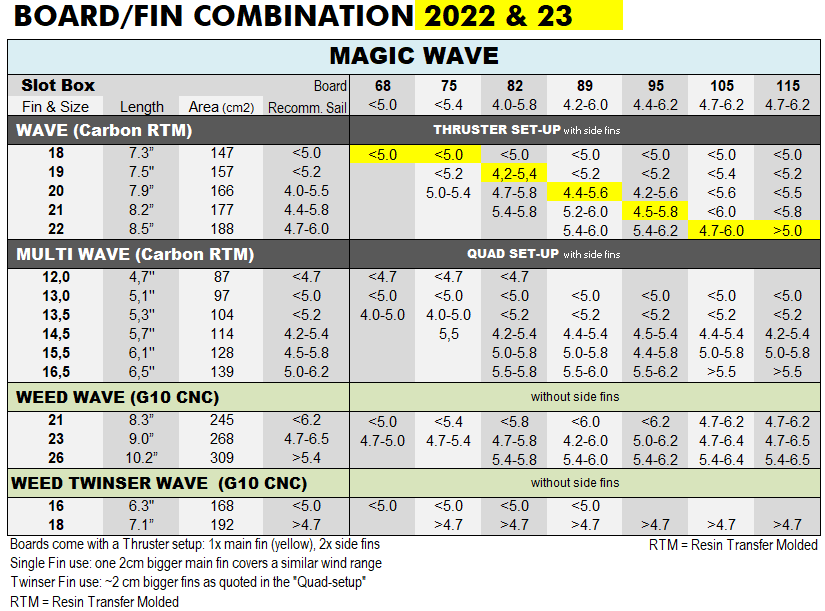
Before getting the JP fins, I wanted to try the K4s, both because I already have a Scorcher Super Stiff 16 (so I got a second one as a center fin), and because, as I've written in the past, I've always liked the K4s a lot (and they cost less). The Scorchers are suitable for side/side-off conditions, and for wider turns.
Antonello from Hatropina, K4 distributor for Italy, suggested I also had to try two K4 Leon 16s, which are similar to the JP multi wave fins, as a shape; the Leon are more suitable for onshore conditions (a lot of lift, and acceleration).
I tried the board for the first time, at Coudouliere, in France (read report). This is the first impression of that day:
"I rigged the Guru 4.7, and the Jp Magic Wave 89 that I set up with the two standard side fins, and two K4 Leon 16 fins, recommended to me and purchased by Antonello di Hatropina. And it was a blast! The wind remained oriented from the West (almost WSW), and a bit gusty, even if strong; the water level was really chaotic (with this wind direction, in the middle of the bay, it seems that there is almost a rebound wave coming from Cap Negre, and therefore from the North West, which overlaps with the one from the West, pushed by the wind). But the JP Magic wave in these conditions was a bomb, perfect for onshore. The two central K4 fins, as described by the manufacturer, give a fantastic acceleration to the board. When the gust arrives, just bear away slightly, and pump the sail a bit, and the response is immediate. The board starts planing instantly, immediately gaining excellent speed, and, very importantly, it then ride upwind very well, to recover water. The board was also very easy to jibe, very good also in tacking in the chop (that's exactly what I was looking for), and also performed well in the waves in onshore conditions, even if I remain a somewhat poor rider in riding waves with this wind direction.
Then, I did another short test of the board in Andora, Liguria, Italy, in October 2024 (read report). On that occasion, I combined it with the Goya Guru X Pro 4.2 and set it up with the standard fins, and therefore as a thruster. In the water, the sail was the right size, and I liked the board. The sea was quite tidy, on that occasion, and every now and then nice sets of waves came in, about a meter/meter and a half. The Jp performed very well during the bottom, and in jibing.
I then had the opportunity to test the board better three more times, during a nice trip to Sardinia, in November 2024 (read report).
First, in Sardinia, I tried the board in La Ciaccia. I went out with the Jp Magic wave 89 set up as a quad, with the two central k4 Scorchers, to have the board a little softer, given the strong wind. I liked the board, set up like that. It was reactive in changes of direction and in control in the water, and also in the air in jumps. Unfortunately, the test was penalized by the fact that I had the wrong sail in the various phases of the session, always resulting a bit overpowered. However, in side on conditions, at the limit of the conditions of use of the board, due to its volume, it proved valid, allowing me to sail upwind quite well, which is important in a tricky spot like La Ciaccia, with a generally unstable wind, and with a fair current near the shore.
I then tried the board in Cala Pischina, with beautiful waves, and light wind conditions. Here, I guessed the right the equipment: the powerful Banzai 5.3 allowed me to catch more waves, and steal a few glides, avoiding a tiring float; the Jp Magic wave 89 with the central K4 Leon, more rigid, guaranteed me even more speed and upwind sailing. In these conditions, this board, in this volume, was the best solution, performing better than other famous radical models, which hardly allowed their riders to hook and stay on the fast waves of Cala Pischina. The Jp Magic Wave 89 in these conditions showed all its buoyancy qualities, due to the shape and the distribution of volumes, as well as the overall volume, and the advantages in terms of number of waves surfed, thanks to its speed and lightning-fast planing start. Of course, I realized that when surfing, it does not offer the reactivity of the Da Curve, and requires a little more pressure under the feet. But, before surfing the waves, you have to catch them first!
Finally, I tried the JP Magic Wave again at Funtana Meiga with a big swell (mast high waves), and side off wind, strong, but gusty on the inside. The Jp Magic wave 89 with the Leon, this time was a little hard, offering too much resistance in the water. It would have been better to set it up with the Scorchers, or with the standard fins as thrusters. But, even in this case, the test was a bit penalized by the fact that I entered the water with the 4.7, when the sail was the right compromise solution between inside wind and offshore wind, but then the sail became really too big due to the considerable increase in wind both near the shore and offshore. However, even in these difficult conditions, the board, especially at the beginning of the session, showed its adaptability, and its remarkable ability to change behavior depending on the set and trim of the fins. And this is an aspect that I was looking for, since, especially on intercontinental trips, it is difficult for me to carry more than one board.
It is clear that the generous width at the bow and in the center make it not ideal in the chop of Lake Garda (where I tried it once, again in autumn 2024 - see video), since it tends to bounce a bit. While as mentioned, in reference to the test at Coudou, it tolerates messy seas better, but with waves that are not too close.
But I had the chance to do the definitive test of the board, trying it in ocean spots.
In January/February 2025, I took it with me to South Africa, going out in the spots around Cape Town. The test was significant, both because I had the chance to try the board even in ideal conditions for waveriding, that is with side off wind, perfect for down the line, and because I used it with very important swell and with mast high waves.
Well, I was really surprised. The JP Magic Wave Pro is proposed as a less radical board than the Ultimate wave. Yet, playing with the fin settings, it proved to be at ease even in big and smooth waves.
At Sunset Beach, with a 4-5 meters high wave, I set it up as a quad, with two central K4 Scorcher 16. The acquisition of easy planing by the board often allowed me to quickly go out to sea, immediately taking advantage of the quiet moments between one set of waves and the next. But above all, when it came to riding big waves, the board remained absolutely in control both in the approach to the bottom turn and in the cut back, allowing me to always set my preferred route. It also confirmed, in the ocean, its easy management in jumps, even high ones, which encourages you to approach the loops.
Again at Sunset beach, with waves of 2-3 meters, therefore smaller, and strong but more unstable wind, I preferred to set the board as a quad, but with two K4 Leon, more rigid, as central fins. With this setup, the board allowed me to go upwind better, and to tighten the bending radius in the bottom, to stay attached to the wall of the wave.
Finally, the JP Magic Wave Pro was agile and fast even in the pure down the line of Platboom, with waves of about 1-2 meters.
With more unstable and light wind, and with medium-small waves, I prefer to set it as a thruster, with the standard fins.
In conclusion, the board in South Africa, in ocean spots, confirmed its extreme versatility, proving to be a really fun board in many different conditions. I definitely recommend it.
Ciao. Fabio
Without your Support, Waterwind wouldn't exist. Become our supporter!
If you want to advertise with us, read here, or contact us.
Collaborate with us. Read here!
Buy our Gadgets! Visit our YouTube channel!
Me in action at La Ciaccia with the JP Magic Wave Pro 89





